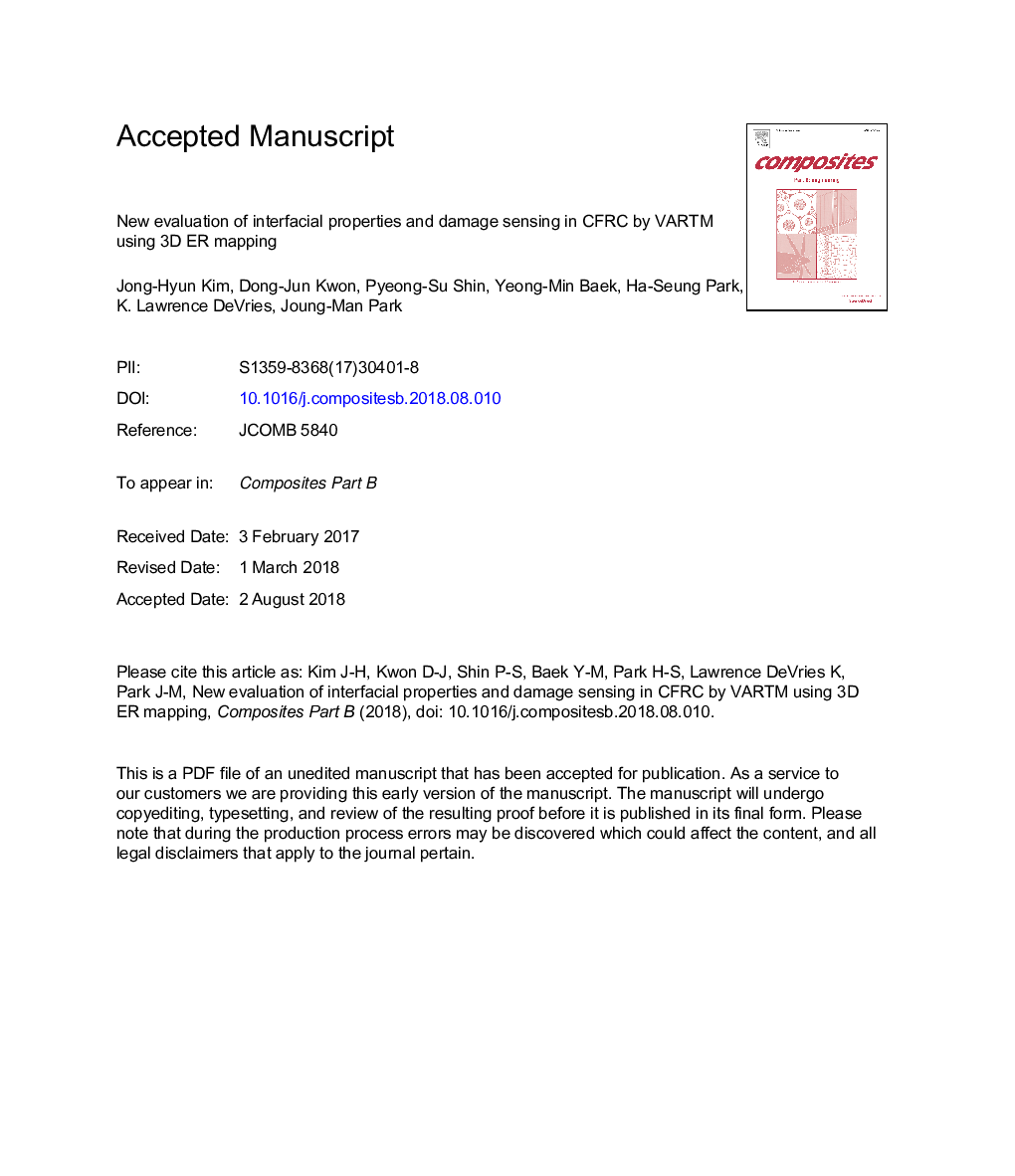| Article ID | Journal | Published Year | Pages | File Type |
|---|---|---|---|---|
| 7211722 | Composites Part B: Engineering | 2018 | 26 Pages |
Abstract
Currently carbon fiber reinforced composites (CFRC) are commonly used in application in which the manufacturing of holes is necessary. In the research reported here CFRC plates were manufactured using two different resins, epoxy and unsaturated polyester (UP), by a vacuum assisted resin transfer molding (VARTM) process. The permeability, as indicated by the spreading difference via VARTM, was measured for two composites with the same fiber volume fraction but different viscosities. The interfacial properties of the CFRC, manufactured using these different resins, were evaluated utilizing the interlinear shear strength (ILSS) test and contact angle measurements. Three dimensional electrical resistance (3D ER) mapping was used to detect damage caused by the drilling of holes in the CFRC plates. Typically such drilling results in damage such as delamination, for which the location and extent of damage of was determined using 3D ER mapping. It was determined that the carbon fiber/UP composite experienced more damage during drilling than the carbon fiber/epoxy composite. This research illustrated the utility of 3D ER mapping for successfully detecting damage in composites and its potential for use in various other practical applications.
Keywords
Related Topics
Physical Sciences and Engineering
Engineering
Engineering (General)
Authors
Jong-Hyun Kim, Dong-Jun Kwon, Pyeong-Su Shin, Yeong-Min Baek, Ha-Seung Park, K. Lawrence DeVries, Joung-Man Park,
